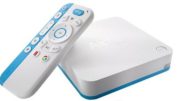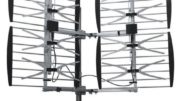Over the years, I’ve tried several times to explain the idea of decibels. You can read one of my favorite tries here. I know it’s kind of a hard concept to understand. That’s why when people ask me what a dB is, I just say it’s a way to measure the strength of something. That’s true, and it’s also roughly all that people really seem to want to know.
Note: What follows isn’t a scientific thesis. It’s not designed to hold up to the sort of rigorous scrutiny as a peer-reviewed paper. As always, I’ve simplified things so that the average person can understand them. This pretty much means that your average retired RF engineer is going to want to poke holes in it.
Yeah but what you’re measuring matters.
Most people are familiar with decibels as applied to audio. We call those dBa. This is a perfect example of how most people really understand (or don’t understand) decibels. We know that more decibels means it’s louder. In reality you’re measuring the pressure exerted by the vibrations against the air, and a 3 decibel increase means a doubling of that pressure. It doesn’t mean something is “twice as loud” because that’s very hard to measure. It’s very subjective.
When it comes to measuring the sensitivity of antennas, you’ll generally see measurements in dBi or dBd. Both are perfectly valid and as long as you know which is being used, you’re able to compare antennas.
dBd = “compared to a reference dipole.”
That’s right, dBd describes the amount of gain compared to something called a “reference dipole.” This is a real thing, or at least it could be a real thing if you wanted to. A dipole is just another word for an antenna that’s shaped like a T. (More about that here.)A reference dipole is a specific antenna that everyone agrees that you should measure against. That’s all it is. It’s just a thing that we all can use to compare antennas.
dBi = “compared to an isotropic radiator.”
Now here’s where it gets a little trippy. There’s this idea of an antenna called an “isotropic radiator.” That is an antenna that is capable of either broadcasting or receiving exactly the same amount of signal from all directions. Sort of like an Omni antenna, except totally perfect. The thing about isotropic radiators is, they don’t exist. This is the real world. Nothing that perfect could exist. We could get close, but never so close that we’d have something functionally perfect.
Still, it’s helpful to compare antennas to this mythically perfect antenna. It tells us how the antenna would perform in a lab and that’s a good way of keeping everything equal.
Does it matter which one you use?
Most antennas I’ve seen use dBi. In truth it doesn’t really matter. In fact you can convert from dBi to dBd very easily. There’s a 2.15dB difference between them. In other words:
- dBi = dBd + 2.15
- dBd = dBi – 2.15
Why is this so hard?
Friends, I’m going to tell you the thing that no one else is willing to: it’s more or less impossible to predict how an antenna is going to work at your house unless you’re actually there. There are just too many variables. There’s the wind, the weather, the amount of UV radiation, the things in between you and the tower, and half a dozen other things including pure random chance.
But, we can predict how an antenna is going to perform in a perfect environment. And it’s very consistent. So we can say that such-and-such antenna is going to be more sensitive than so-and-so antenna in that environment. And in theory, that should translate out to your house too. An antenna that’s more sensitive in a perfect world is also going to be more sensitive at your house. Does that mean it’s for sure going to get the channel you want? It doesn’t. But it certainly gives you a better chance.
How does this translate into the real world?
So far we’ve really talked a lot about testing environments and antennas that couldn’t possibly exist. Believe it or not though, it’s the best way of describing antenna performance. It’s also the best possible way of measuring something. Believe me, because I measure a fair amount of antennas.
When I measure antennas, I don’t have a set of reference dipoles. You’d need one for every frequency you want to measure, by the way. So even if I got 35 of them, which is what you’d need, I don’t know where I’d store them. So I’ve created a measurement that does work here at the Solid Signal test facility and as long as all the antennas I measure are compared to that, it will tell me the same thing as if I had a reference dipole.
At one point, I sacrificed a perfectly good coaxial cable so that I could make a T-shaped dipole out of bare wire, exactly six feet long. Why six feet? It seemed like a good way to get all the frequencies I need, since some wavelengths are quite a bit longer and most are shorter. I took comprehensive measurements of that dipole, pointed precisely at the broadcast towers, on a sunny day when it was exactly 68 degrees. Why 68? Something about that being the “standard temperature” popped into my head and I think I learned that in chemistry class. It’s also a temperature that I can achieve year round in Solid Signal’s west coast labs. I try to test all my antennas at about the same temperature, on a sunny still day.
Earlier in this article I said that “dBd” is “a thing we can all use to compare antennas.” And that’s what my bare wire measurements are, too. Not perfect, but it’s something.
Want a new antenna?
Over-the-air TV antennas are a great way to get free television. Once you buy one, there’s nothing more to pay, ever. In an age when your car wants to bill you monthly for heated seats, you can’t say that about most things.
So, shop for antennas at Solid Signal where you’ll find the best selection. If you have questions, call us at 888-233-7563. Or, if it’s after hours, fill out the form below. We’ll get right back to you!





